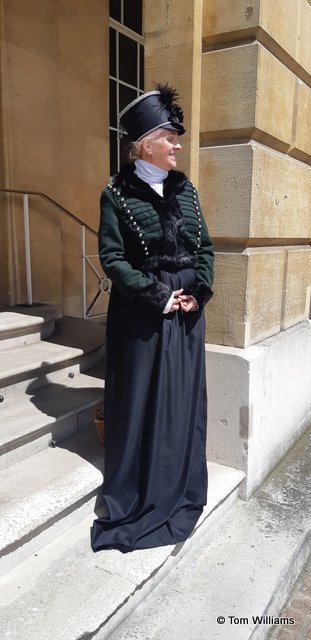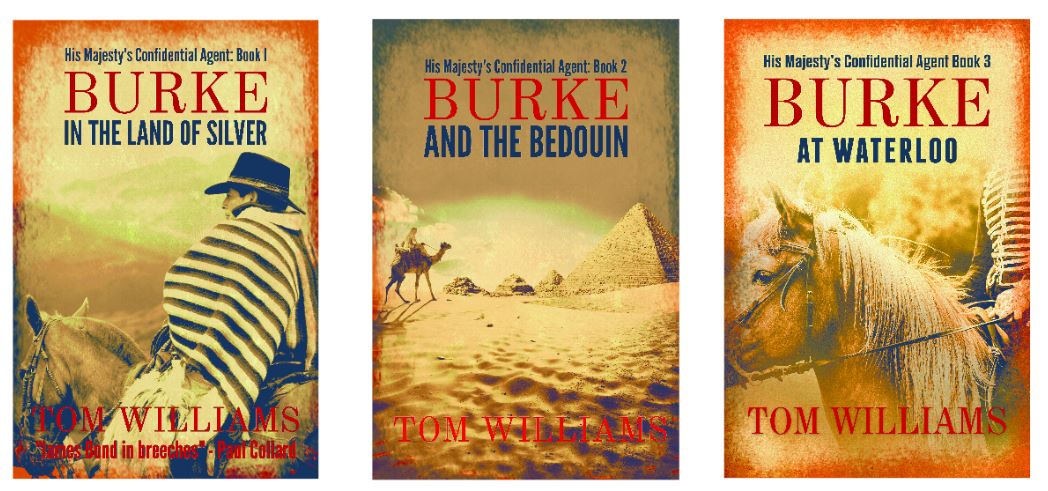I’m returning to a favourite theme of mine – that the events of 1815 have had a direct impact on the world of today, though not necessarily in the way that many people think. This week’s ramblings were inspired by lectures at the conference on ‘War and Peace in the Age of Napoleon’, particularly those by Eamonn O’Keeffe, Joseph Cozens, and Robert Poole.
The French Wars continued for over 20 years and are often said to mark the start of the modern concept of “total war”. The wars impacted across society, with the militarisation of much of the economy. In some areas, a phenomenally high proportion of men joined the volunteers: in Lancashire it was 32%. Even women’s fashion took on a military flavour, with some women dressing in clothes that reflected the uniforms of the regiments that they (through family or geographical links) were associated with.

In many ways, the war had an increased social impact with demobilisation. Suddenly 300,000 soldiers and sailors returned to civilian life. While, for the first time, some of them were paid pensions, money was only given to those who had served 14 years or more or been injured. Three quarters of demobilised soldiers got no pension and for most of those who did the amount was not sufficient to live on.
The end of the war marked the beginning of a period of “General Distress”. The economy was staggering under the weight of war debt. Food prices were high, shortages exacerbated by exceptionally poor harvests in 1816. Wages were low and many of those discharged from the forces were unable to find employment.
Unsurprisingly, the years following the war saw popular unrest and protests, especially in the northern industrial towns which were particularly hard hit by the recession and which were not properly represented in Parliament.
The period saw what Cozens called “the militarisation of protest”. Marchers organised in columns and were often drilled in their marching by ex-soldiers. Demonstrators marched behind bands, often ex-military men. They marched with banners which had often been ceremonially presented by women supporters, modelling the presentation of military colours and, as with military colours, the marchers were urged to defend the banners. Police and military units breaking up demonstrations (as at Peterloo) would often target the banners, trying to seize them just as they would try to capture the enemy’s colours in war.
Parliamentary elections might not have involved many actual voters, but they did involve the general population with marches and rallies, often taking on the character of holidays. Processions (with banners) were often led by military bands. In theory, serving soldiers could not lead political processions, but this ban was widely ignored.

Bedford Town Election (1832); The Higgins Art Gallery & Museum, Bedford
According to O’Keeffe’s presentation, this increased militarisation of political events was accompanied by an increased use of military language in campaign rhetoric: opponents would be put “under siege”, there would be “volleys” of arguments against them. O’Keeffe says that this language was seen occasionally in the 18th century, but became commonplace after 1815.
The links with today’s political rhetoric are obvious and often the subject of negative comment in the press and elsewhere. For example, here’s the Guardian after Joe Cox was killed in 2016:
On the morning of the referendum result, Farage celebrated a victory that had been won “without a single bullet being fired”. When Thomas Mair, Cox’s alleged killer, appeared in court on Saturday 18 June, he gave his name as “death to traitors, freedom for Britain”. Not two weeks later, the term “traitor” was being used by some of Jeremy Corbyn’s supporters as a standard term of abuse for anyone deemed disloyal. It appeared on the front page of the Morning Star, and in endless tweets and Facebook posts…
Meanwhile, as the Conservative party has remade itself, the Daily Mail and the Sun have returned to business as usual: Traitor Gove, Knifing of Boris, First Blood to Theresa. In the Mail on Sunday, Rachel Johnson wrote of Michael Gove as a “Westminster suicide bomber”, and professed her hope that she would again dine with his family “when the bleeding bodies of the fallen are removed from the smoking battlefield of this campaign”. The Guardian and Observer were susceptible, too. On a Friday, a prominent headline in the comment pages referred to the “reek of death” hanging over the Labour party; two days later, another referred to its “stench”.
Nor have MPs themselves proved immune. One Conservative, Ben Wallace, said that Gove was “Theon Greyjoy or will be by the time I am finished with him” – a reference to a Game of Thrones character who is castrated.
At the other end of the political spectrum the Daily Telegraph writes:
Three new intellectual magazines backed will appear on news-stands this autumn as the right and centre-left engage in a battle [stress added] of ideas.
There are many criticisms that this type of language coarsens political debate and may lead to violence. I have seen similar arguments in American academic publications, but British commentators frequently suggest that this is a particularly British (or English) concern. The oppositional style of British politics is often compared adversely with the approach taken in other European countries with the horse-shoe-shaped architecture of their parliaments and their predisposition to coalition government.
Of course, other European nations were also militarised during the Napoleonic wars, although it could be argued that their experience was different from that of the British because
- except for the French, all the other nations had periods of peace while Britain had only the short Peace of Amiens and
- other nations had to adapt to the reality of occupation, while the British were able to view war in terms of absolute victory.
Cozens’ paper did discuss attitudes to demobilised soldiers and argued that public attitudes were very ambivalent. Soldiers were simultaneously seen as brave, loyal and organised yet, at least potentially, as criminal, subversive itinerants. To the extent that they were viewed positively, the militarisation of politics makes sense and may well have been more pronounced in Britain than elsewhere in Europe.
So can we blame the Napoleonic wars for the violence of the fault lines that have appeared in British political life 200 years later? It’s not at all clear that we can. O’Keeffe’s research does not allow a direct comparison of the post-war picture with the language prior to the conflict. There is also no evidence that the problem (if it is a problem) is more marked in Britain than elsewhere. Indeed, there seems more academic research supporting the idea that political discourse is underpinned by the language of war in the United States than in Britain. On the other hand, would be dangerous to dismiss the argument altogether. O’Keeffe’s research does definitely show a very high level of militaristic imagery in the years following the Napoleonic wars. Peterloo, in particular, was held at the time to threaten rebellion simply because of the use of banners, drilling, and marching in columns.
As we start new political campaigns, denouncing opponents as traitors and ordering our supporters to target vulnerable opponents, we can see what might be the last traces of the language of the politics of 1816. And as protesters march under banners, albeit to steel bands rather than military music, we are seeing a tradition that goes at least that far back.
Does the language and style of modern politics and street activism really originate in the chaos of the General Disaster of 1815-1819? I honestly don’t know, but it’s a fascinating thought and one that I hope academics like O’Keeffe will turn their minds to.
Acknowledgements
I’m very grateful to the organisers of the ‘War and Peace in the Age of Napoleon’ conference at King’s College, London, and especially to Eamonn O’Keeffe for his paper: “An Evil of Long Standing”: martial musicians, partisan performances and the militarization of British electoral spectacle. Details of his work are available at https://www.history.ox.ac.uk/people/eamonn-okeeffe
A word from our sponsor

My interest in the Napoleonic era stems from the research that I’ve done for my books about James Burke. Burke was real person and although most of his adventures are fictional a lot of research goes into making the backgrounds authentic. Eventually it gets to the point where I spent more time writing stuff like this than I do writing fiction. (I am working on a non-fiction account of the background to Waterloo, if anyone knows a publisher who might want it.) Nobody pays me for writing these blog posts, although I do now accept donations if anybody wants to buy me a coffee. What I would really appreciate, though, is if you bought one of books. They are all available on Kindle and cost £2.99 or less.
Thank you.
